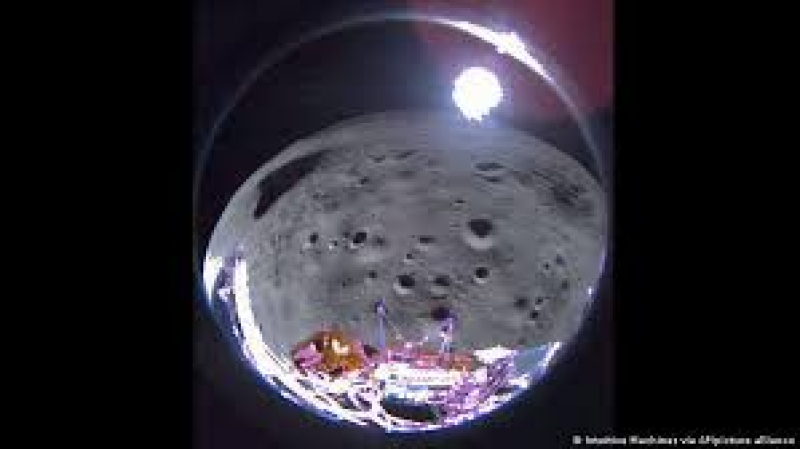- অতিথি পাখির বিচরণ আর দুষ্টুমিতে নান্দনিক হয়ে উঠেছে কুয়াকাটার চর বিজয় |
- Remittance inflow exceeds $632 million in first six days of Dec |
- 18 migrants die as inflatable boat sinks south of Greek island of Crete |
- TIB for polls manifesto vows to curb misuse of powers and religion |
- Khaleda now not fit for travelling: Medical Board |
Moon mission Odysseus to be cut short after tumble

Space engineers expect the lunar probe Odysseus to stop working on Tuesday after it landed too quickly and tumbled sideways onto the moon's surface.
The privately-built uncrewed lander has already sent images from the farthest south that any vessel has ever landed on the moon, but the awkward touchdown has significantly cut its lifespan.
How has the mission been affected?
The Houston-based company Intuitive Machines, which constructed the spacecraft, said flight controllers intend to collect data until the lander’s solar panels were no longer exposed to light.
"Based on Earth and moon positioning, we believe flight controllers will continue to communicate with Odysseus until Tuesday morning," the company said.
The mission had been due to last between a week and ten days but is now due to last only five days.
The sideways posture substantially diminished the amount of sunlight that could reach Odysseus' solar panels to power the mission. Two of its antennae were pointed to the ground, limiting communications with the lander.
The company tweeted that Odysseus had sent images from the lunar surface of its vertical descent to the landing site by the moon's Malapert A crater, as well as a snapshot taken shortly after the ill-fated landing.
Intuitive Machines says laser range finders — to direct altitude and forward-velocity values to the craft's autonomous navigation system — were inoperable because engineers had failed to unlock a safety switch before launch on February 15.
The forward speed of the spacecraft on landing was about twice as fast as expected, and company executives say it may have been a factor in stumbling. An improvised software "patch" was used to help avoid a crash landing that would have destroyed the probe, reports DW.
Intuitive Machines says it is still uncertain if the original laser range finders might have made a difference if they had functioned.

